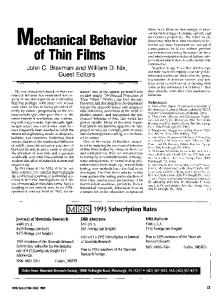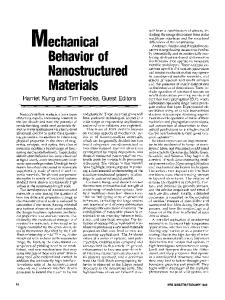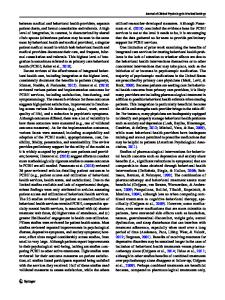Improvements in Mechanical Behavior of SOFC Anodes
- PDF / 313,824 Bytes
- 6 Pages / 612 x 792 pts (letter) Page_size
- 39 Downloads / 348 Views
FF3.10.1
Improvements in Mechanical Behavior of SOFC Anodes O. Kesler, R. L. Landingham Lawrence Livermore National Laboratory Livermore, California, U.S.A. ABSTRACT Processing-induced residual stresses in the component layers of Solid Oxide Fuel Cells (SOFC’s) can lead to fracture or to cell curvature which impedes stack assembly. Reducing or eliminating residual stresses to improve the mechanical behavior of the cells becomes increasingly important as the area of the cells is increased to increase the power of the fuel cell stack. Residual stresses in SOFC’s result primarily from differential thermal expansion and sintering shrinkage between the component layers, such as the electrolyte and the anode support in a planar cell. This work investigates the impact of anode composition on each of these factors, with the ultimate goal of designing a flat, large-area cell. A range of anode compositions is investigated to determine the effect of different additives on the sintering behavior, and on the thermal and mechanical properties. Dilatometry, sintering shrinkage, scanning electron microscopy, and reduction studies are performed to correlate the microstructure, thermomechanical behavior, and composition. The experimental results are used to select an anode composition that leads to low overall cell curvature and improved mechanical behavior with respect to standard SOFC anode cermet materials. INTRODUCTION Solid oxide fuel cells (SOFC’s) have the potential for the highest efficiency among the different fuel cell types when using pure hydrogen fuel, making them attractive candidates for applications in both transportation [1] and stationary power generation [2]. However, their widespread commercialization remains limited due to materials challenges posed by the hightemperature operating environments (typically 600-1000oC, depending on the materials used). Differential thermal expansion and sintering shrinkage in the fuel cell material layers lead to thermal stresses in production and operation that limit cell lifetime and reliability. This work seeks to improve the mechanical behavior of solid oxide fuel cells and to reduce thermal stresses and curvature in the cells by more closely matching the thermal expansion of the different material layers. We examine anode-supported cells, and study the effect of doping the traditional Nickel-Yttria-Stabilized Zirconia (Ni-YSZ) cermet anode material with Al2O3 in order to better match the thermal properties of the anode with that of the electrolyte coating. EXPERIMENTAL PROCEDURE Powder specimens were made with a range of compositions by adding Al2O3 in varying amounts by volume fraction to NiO and ZrO2-8mol%Y2O3 powders. The volume fraction of NiO in the starting powders was held constant at 51%. Powders were made by wet ball-milling in alcohol, with 1 wt. % of PVB used as a binder and varying amounts of rice starch (0-22 wt. %) used as a pore former. Two compositions were chosen for production of anode tapes prepared
FF3.10.2
by tape casting from NiO, YSZ, and Al2O3 powde
Data Loading...











